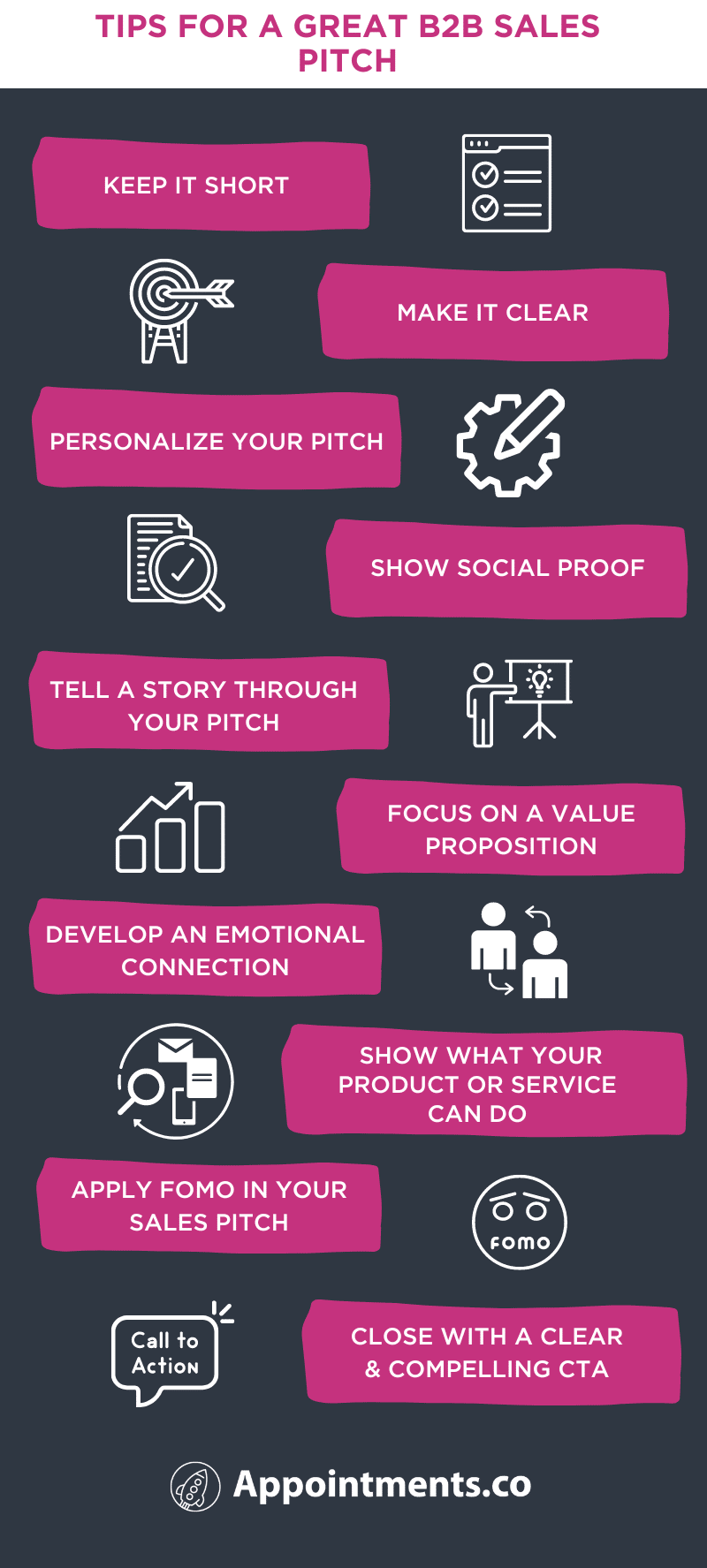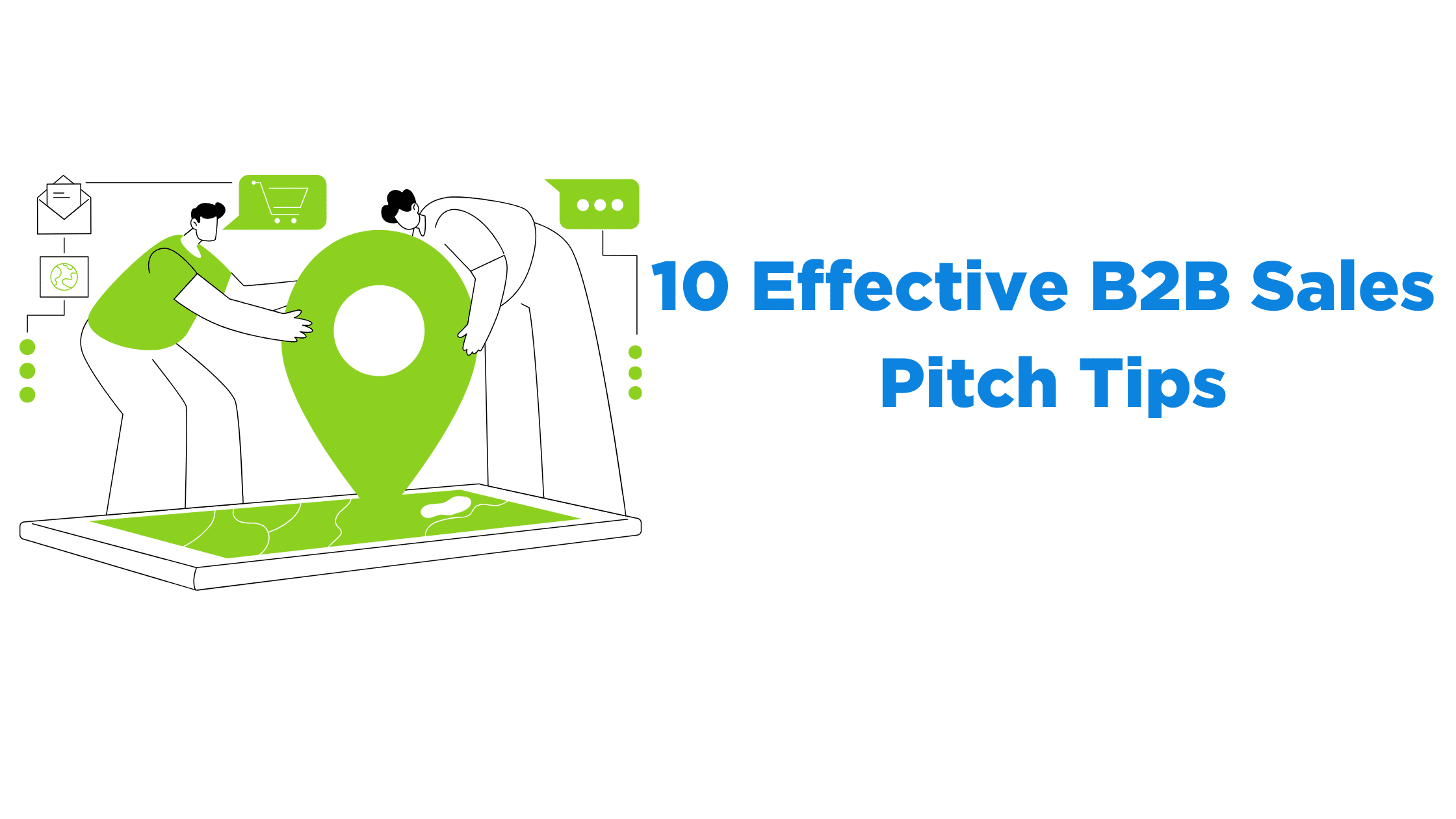A strategically developed B2B sales pitch can help you get great business deals. Statistical data from Hubspot says that personalizing email subject lines leads to a 22% increase in open rate. This data says the importance of a clearly created sales pitch that can grab your audience’s attention.
Getting the right sales pitch is the spotlight of your business acquisitions, but the challenging thing is that most of us tend to restrict sales messages. I’m sure salespeople will relate to this. You have probably searched for “sales pitch examples or tips” to strengthen your pitching games. So, this blog will elaborate on a few effective B2B sales pitch tips that can help you in your B2B sales journey!
What Is a Sales Pitch?
A sales pitch is like a verbal business card that creates a convincing first impression to your potential customers about your business’s product or services. The sales pitch should be crisp to ensure listeners believe what you say.
But here’s where things get tricky: Our brains are wired to resist sales messages. So you need to nail down your sales pitch before meeting your potential client. The perfect sales pitch should not simply convince your customers to buy your products/services. Instead, it should show them how you have effective solutions to solve their potential problems.
To curate the perfect B2B sales pitch, let us look at the proven and efficient tips that can help you drive more conversions.
Difference between B2B and B2C Sales
When both types of sales are all about urging a buyer to make a purchase, there is a slight difference between the two based on who the buyer is. In B2C, the buyer is usually an individual, whereas in B2B, it is a business organization. This difference might sound simple, but in terms of curating pitch, you need to have a deep understanding of these personas.
A B2C pitch has to be created with the intention of convincing a single user or a small team to use the brand. In contrast, a B2B pitch has to be even more business-centric. The buyer is responsible for an entire organization and will keep in mind the business’s need, capacity, and impact on every individual business, not just one.
| B2B Pitch | B2C Pitch |
| Business-to-Business Ideas | Business to Customer ideas |
| The target audience is a business. | The target audience is an individual. |
| Your audience’s decision will impact a whole business setup and everyone in it. | Your audience’s decision is based on their own needs. |
| Business people’s decision might take time as it involves the analysis of the demand. | An individual might not take a lot of time to decide. |
| Personalized sales pitches with possible pain points should work. | Personalized sales pitches with their business trends and challenges are required. |
Tips for a Great B2B Sales Pitch

#1. Keep It Short
Always remember shorter is better when it comes to B2B sales pitches. When doing a pitch, you might not be sure if the other person is occupied. A concise pitch generates more interest. The prospect is more likely to listen to the whole sales pitch, and you can get your point across faster and more efficiently as you’re forced to use simpler terms.
Mainly, you can skip certain basics, such as your mission, value company statements, and your company history. Focus only on the important points and statistics, so prospects don’t feel overwhelmed and bored with the information and presentation.
#2 – Make it Clear
While you keep your pitch short, you must also ensure it is crystal clear. Avoid using any fluffy words and irrelevant messages, as that can distract the prospects. You must highlight the main points of how your products’ features will solve their problems.
Then you need to give them a clear picture of how their business will improve after a collaboration with your brand. Present the problem, discuss benefits, and show the result while keeping it simple, clear, and concise.
#3 – Personalize Your Pitch
Personalization can do wonders, and every marketer and sales executive knows this. While making the sales pitch, B2B salespeople make a common mistake using generic pitches for all their communications and presentations.
Every client is different, and if they are treated in a more personalized way, they are more likely to consider your brand. So, do your homework, uncover the specific challenges the particular client might face, and develop unique solutions tailored to their business problems in your pitch. This will help to give the impression that you take each prospect seriously.
#4 – Show Social Proof
When you present real data and quotes from your customers about you, your brand becomes more trustworthy, and prospects start to believe you. They are more likely to consider your offer when you show them success stories.
Have a testimonials section on your website and design case studies about your loyal customers. Share their challenges and how your solution helped their business. If possible, get a quote about your brand from customers, and you can highlight it using statistics and graphs. All of this also helps you convey and prove that you have experience.
#5 – Tell a Story Through Your Pitch
Facts, statistics, and figures are all important, but these are not enough to keep the prospects engaged. So, while pitching the idea, you need to develop a story to make the pitch interesting. A story should help your prospects figure out how they fit into the company.
To make it more captivating and appealing, curate your story around your product or services that initially talk about the problems and how a collaboration with you can solve them and positively impact the prospect’s business. Make sure that the hero in your story is the prospect and not your brand. Your brand is just there to support the hero.
#6 – Focus on a Value Proposition
You need to ensure that your B2B sales pitch focuses on the value you can provide to the prospects or their companies. The best way to do this is by talking about the main benefits they can get from using your products.
Prospects want to hear what they can gain from your brand, like an increase in productivity, a decrease in bounce rate, a boost in revenue, and so on. Think from the prospect’s perspective and determine why a prospect would want to choose you. Then, you should have a better understanding of your value propositions.
#7 – Develop an Emotional Connection
Prospects should feel they are talking to someone who cares, rather than a salesperson who wants to sell a product. To do this, you must first understand the customers and tweak your sales pitch around their experiences.
This emotional connection can make your communication over emails and calls more personalized. This can quickly spark sympathy and can drive prospects to buy your products/services.
#8 – Show What Your Product or Service Can Do
While you have already highlighted the benefits of using your products, you must present the best and unique features at the perfect time. The prospects should go “wooah, awesome!” when they see what the unique features can do for their business.
You can show this by giving a demo or walkthrough of your product. The customers will better understand what you are offering and how they can benefit from the same.
#9 – Apply FOMO in Your Sales Pitch
You can use the fear of missing out (FOMO) tactic to create a sense of urgency. You can apply FOMO to the sales pitch if you need to push them down the sales funnel to complete the purchase right away.
This includes telling them about a special time-limited discount offer, a month’s free subscription, a gift, and so on. However, you should not use it constantly because that can degrade the quality of your offer. Use this on prospects you think are a step away from purchasing your products.
#10 – Close with a Clear & Compelling CTA
If the conversation or presentation went well, and you have answered and addressed all of their queries, your prospects are likely to move to the buying phase. You need to add the finishing touches to your sales pitch.
Your call to action should not be a direct, straightaway call to make the purchase. Instead, it should guide the prospect toward the next intermediary stage that will lead to the final sale. You can create the CTA around proof of concept, pricing details, etc. It should be clear and actionable so that the pitch deck is effective.
Frequently Asked Questions (FAQs)
1. What is a B2B Sales pitch?
B2B sales pitches are conversations or interactions where you offer your product or service to solve a potential customer’s business problem.
2. What are the different ways of ending a B2B sales pitch?
There are no desired ways to end a sales pitch. You need to personalize your sales pitch accordingly based on the customer persona. Some of them are listed below.
– End with a challenge
– Question-based selling
– Surface their objections
– Tell a brand story
How do you start a B2B sales pitch?
– Keep it short and precise
– Be concerned about the customers and their needs
– Show what your product or service can offer to them
– Build an emotional connection
4. How is a B2B sales pitch different from a B2C sales pitch?
Both are just business ideas to reach out to their target market. Whoever the target is, addressing their challenges and helping them understand your brand’s value proposition is the core need.
When talking to a business, you must always remember your audience’s decision will involve the benefit of the whole business. So, write compellingly for a business person to collaborate with your brand.
5. How do you personalize a B2B sales pitch?
When personalizing a pitch for a business, you have many factors to consider. You can talk about their niche and the recent trends in the market. You can also research the market and tell them how your brand could help them win their competition.
Closing Thoughts
Optimizing your sales pitch and developing your presentation skills are essential to expanding your B2B market. As discussed above, these B2B sales pitch tips can help you boost your conversions. Make your prospect the hero of the story and revolve everything around their business, while linking the benefits of your products or services.
However, in B2B, everything is easier said than done. You need to strategize everything and do proper research on your potential customers. This takes time and patience. So, if there are more pressing issues and you are low on resources, you can always outsource certain sales plus marketing ventures. Want to learn more about a collaboration opportunity? Feel free to reach out to our team.
Related Posts:
Illustrations by Storyset



